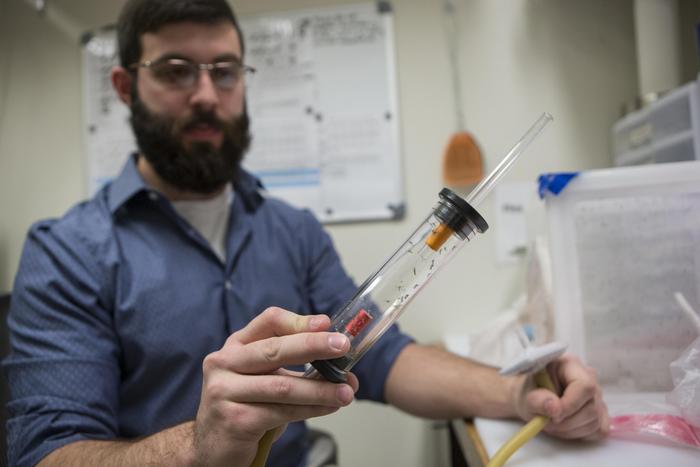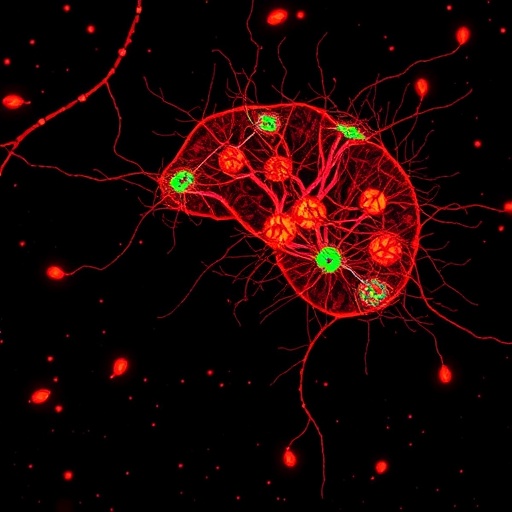In arid conditions where water scarcity typically hampers insect reproduction, the traditional belief that fewer mosquitoes mean a reduced risk of disease transmission is proving misleading. The research demonstrates that mosquitoes can adjust their feeding habits to survive when rain is scarce. Instead of merely relying on a singular blood meal to fuel their reproductive cycles, these persistent insects will engage in multiple blood-feeding episodes to sustain themselves. As a consequence, this behavior could inadvertently enhance their ability to spread viruses, fueling concerns about public health during drought scenarios when one might presume mosquito populations are dwindling.
Dr. Holmes and his team focused on two mosquito species notorious for their roles in transmitting infectious diseases. Their findings illustrate that these mosquitoes have developed behavioral adaptations that allow them to continuously seek blood meals even during dry spells. The researchers argue this phenomenon can lead to a paradox wherein the incidence of transmitted diseases might not necessarily drop during droughts, despite lower overall mosquito counts. Instead, those that do survive under these harsh conditions tend to bite more frequently, escalating the risk of disease spread.
The investigation also delves deep into how climate change is influencing mosquito behavior. With winters becoming milder due to rising global temperatures, mosquitoes are finding new opportunities for survival and reproduction. The researchers found that these environmental changes create favorable conditions for female mosquitoes to indulge in blood meals, ultimately increasing their reproductive capabilities. This coupling of environmental stressors with behavioral adaptability is a critical aspect of understanding how mosquito populations could respond in the future, particularly amidst ongoing climate changes.
A major revelation of the study is the feedback loop between drought coping mechanisms and increased disease transmission. While mosquitoes are often assumed to be less abundant during periods of dryness, the reality is more complex. The research indicates that during droughts, these insects engage in more frequent feeding sessions to stave off dehydration and maintain their reproductive output. This adaptation might confer an advantage in environments affected by fluctuating climates, allowing them to rapidly rebound once conditions become favorable again, posing enduring challenges for global public health initiatives.
Holmes emphasized that the higher frequency of mosquito bites during drought conditions comes as a challenge to previous assumptions about their population dynamics. There remains a common misconception that drought equates to a decline in mosquito-borne infections. However, the data gathered by Holmes and his colleagues indicates that this is far from the truth. Their modeling suggests that the resilience and adaptability of these insects underscore a compelling need to recalibrate our understanding and management of mosquito populations.
The study incorporates intricate experimental methodologies, including genetic alterations of mosquitoes to observe the impact on their survival under dry conditions. The team particularly focused on impairing certain sensory capabilities in these insects, such as their ability to detect carbon dioxide—an essential cue used for locating potential hosts. The findings revealed that mosquitoes unable to sense carbon dioxide succumbed to drought conditions simply because they could not effectively locate and engage in feeding with available hosts.
Another enlightening finding presented in the research relates to the strong resilience of mosquito eggs. Many species, including the notorious Aedes aegypti, have evolved to withstand significant periods without water, with some eggs capable of surviving up to a year. This means that after a long dry spell, rainfall can trigger a near-instant hatching event, bringing forth new generations of mosquitoes that are ready to thrive in newly available environments.
The capacity of adult mosquitoes to endure unfavorable conditions cannot be overlooked either. The research sheds light on the survival strategies employed by species like Culex mosquitoes, commonly found globally. These insects often seek shelter in protected areas like cellars and culverts during the harshest weather, feeding on nectar before winter to build up their lipid reserves. This accumulation of fat allows them to endure colder months and emerge rapidly when the temperature rises again.
As the cycle of mosquito populations continues, the implications for human health grow increasingly severe. Each year, mosquito-borne diseases collectively claim the lives of over 700,000 people, making it imperative to understand the biology and adaptations of these insects. The research conducted by Holmes and his team adds a critical layer to our understanding of how evolutionary biology and environmental stressors interact, revealing pathways into the persistence of these vectors of disease.
Professor Joshua Benoit, a co-author of the study, highlighted that these mosquitoes exhibit an extraordinary capacity for survival through adversity. Their findings prompt a reconsideration of strategies employed to deal with mosquito-borne diseases. With vast implications for epidemiology and public health, it is crucial to invest in research that further elucidates the complexities surrounding mosquito biology in a rapidly changing world.
In sum, the research not only surveys the resilience of mosquitoes but also raises essential questions regarding the evolving strategies that health authorities may need to implement for effective disease control. Understanding these dynamics, particularly alongside climate change, is pivotal for developing proactive responses to mitigate the health impacts posed by these adaptability specialists. The revelations from Holmes’ team stand as a stark reminder of the need for continued vigilance and adaptation in our fight against the ongoing threat of mosquito-borne diseases.
In light of the compelling evidence compiled and shared through this study, it is evident that our understanding of mosquitoes must evolve to encompass their surprising adaptability and resilience. Acknowledging the intricate relationship between their life cycles and environmental conditions could be key to managing the public health challenges we face today and in the future.
Subject of Research: Animals
Article Title: Multiple blood feeding bouts in mosquitoes allow for prolonged survival and are predicted to increase viral transmission during dry periods
News Publication Date: 8-Jan-2025
Web References: iScience, DOI
References: Not available
Image Credits: Credit: Andrew Higley
Keywords: Mosquitoes, Droughts, Epidemiology, Human health





